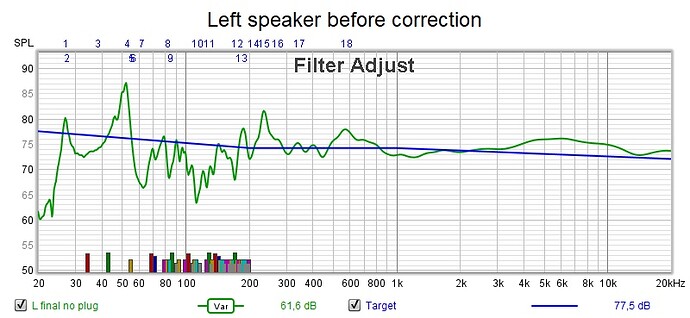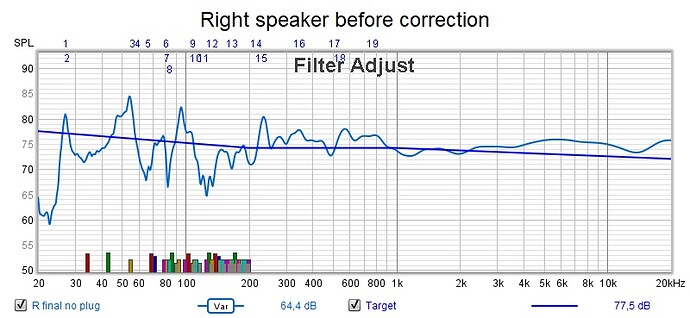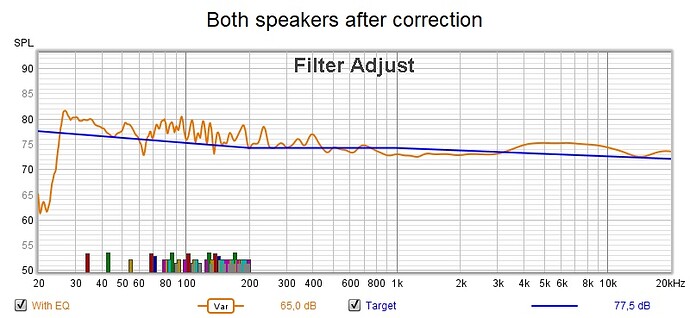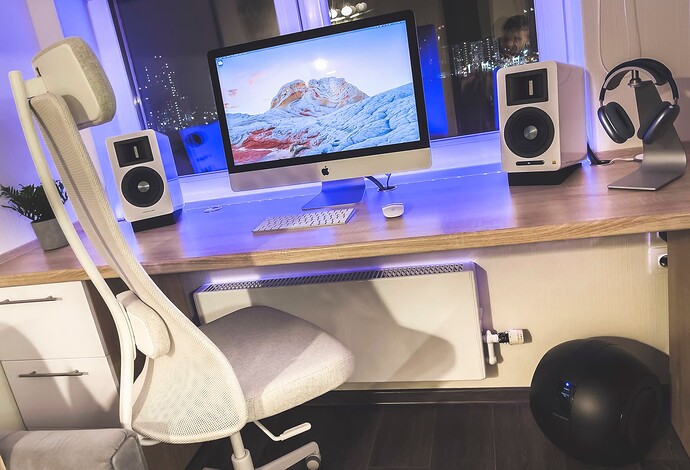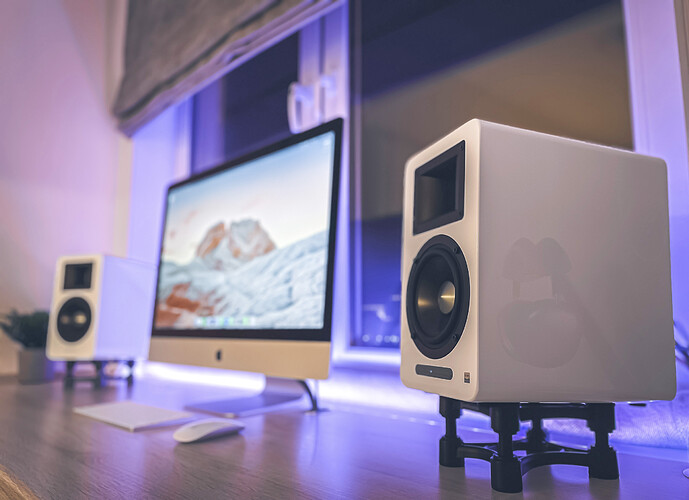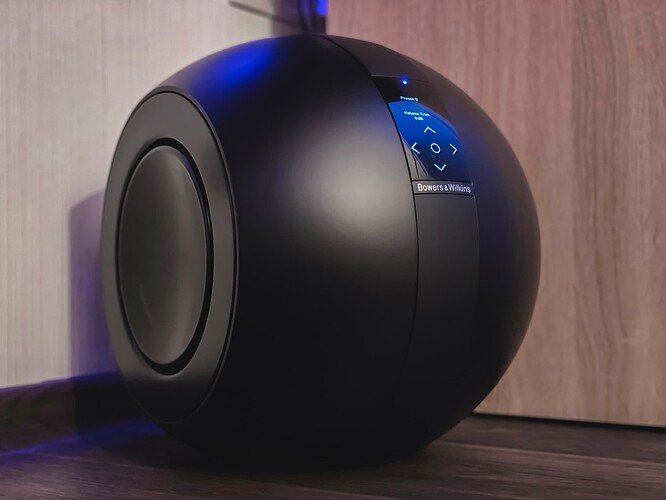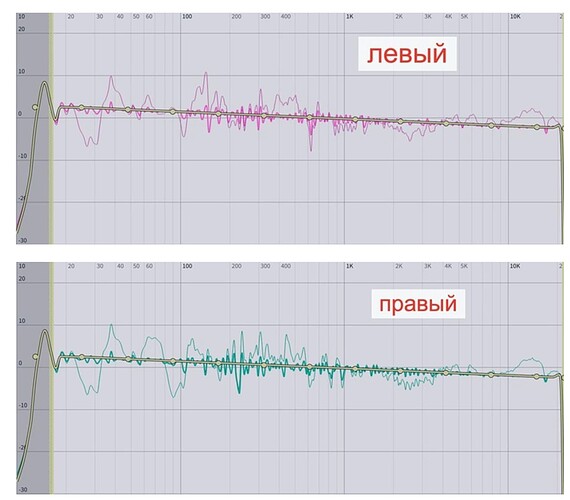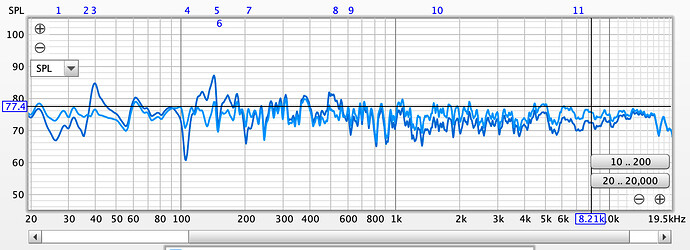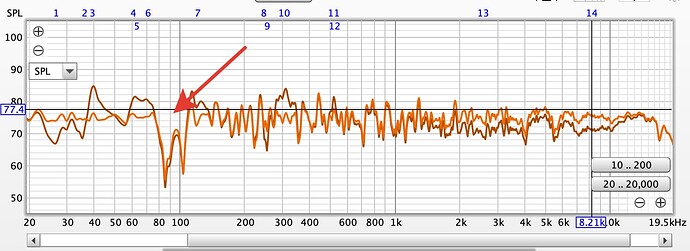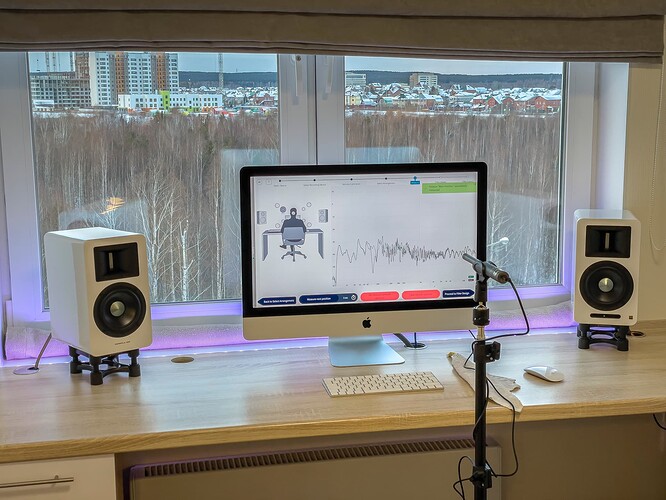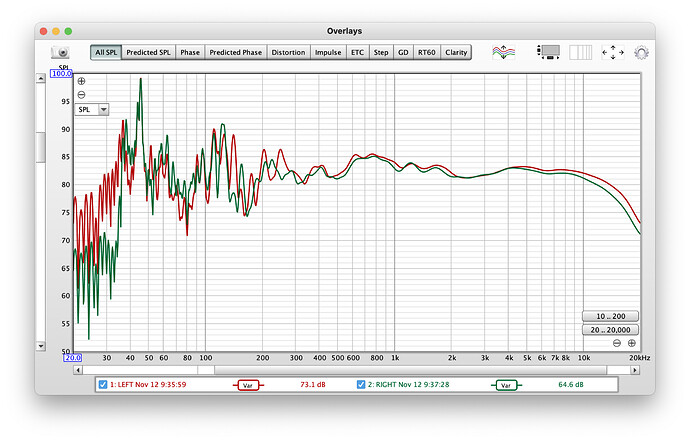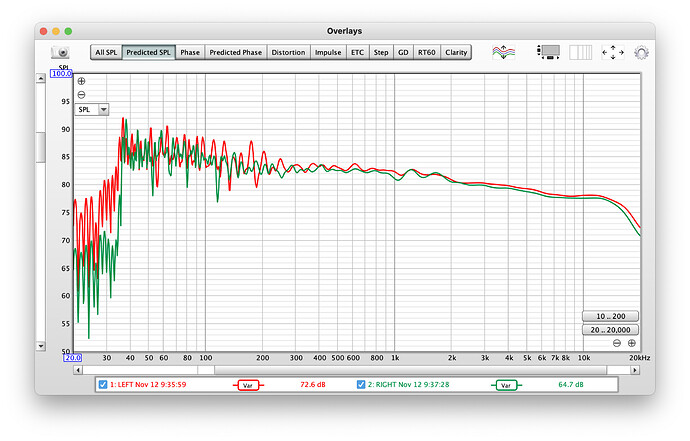Thanks again for this great guide!
I just went through the process and am happy with the result, sound-wise. However, I had to push headroom to -7dB to completely prevent clipping… the clipping indicator turned on just occasionally and for short moments on some tracks, but still. So I’m just wondering: Is there any problem caused by using that much headroom?
Also wanted to share my results with you. EQ limited from 20 to 800Hz. Open for any further improvement advice or comments from the pros!
It depends on if you use integers or floats, someone else who has more technical knowledge might be able to answer this better, but when using float there is no use with normalizing to peak value so best to leave it unchecked.
Personally, I always use 32-bit float and no normalizing.
Good day! Just started to deal with REW.
This is how my setup looks like:
Trifonik, which consists of an acoustic speaker Airpulse A100 and a Bowers & Wilkins PV1D subwoofer.
Measured but with different microphone positions.
The first measurement is the 90 ° calibration file and the microphone in an upright position. The second is a regular calibration file and a microphone in a horizontal position. True, in this measurement, the subwoofer gain was set to + 2dB. Usually set to 0, so anything from 20 to 100Hz can be skipped.
The question is - which of the above measurement options will be more correct?
Here are the links to the measurements:
For clarity, here is the equalization according to the @Magnus instruction for the left and right channels.
When measuring the microphone horizontally:
When measuring a microphone in a vertical position:
And here you can see that there is a difference in the measurement results depending on the position of the microphone … This is especially noticeable from 2000Hz, just at the cutoff frequency of the tweeter. Therefore, it is interesting to know in which position the measurement will be more correct?
I take measurements using a UMIK-1 USB microphone.
Finally, 2 questions:
1) How do I get REW to remove the lower hump at 85Hz?
2) Is it possible with REW’s capabilities to raise the middle from 2000Hz?
And how can I best put them together in one big picture? As for example, Dirak does it when it equalizes two channels at once so that there is no difference in perception.
Thanks in advance for your answers!
Cool system. PM sent.
The only filter where REW automatically corrected from 2000Hz is 1/48 smoothing.
But again, the hump at 85Hz does not want to get out of it.
And in general, the frequency response looks ragged ((
How can I tweak the frequency response neatly and smoothly?
use psychoacoustic smoothing instead
it’s a dip, and you shouldn’t correct it, because that’s very likely a standing wave null at your measurement/listening position.
did you measure with the moving mic procedure or a static mic position?
Thanks! How can I get REW to do the correction from 2000Hz?
No, I used a static microphone position. To be honest, I didn’t understand how to measure with a moving microphone.
In Dirac, I used 9 statistical zones to measure:
And can you please in more detail about the standing wave? How did it come about?
Seems, you did the measurements with the subwoofer contributing, which could cause phase cancellation with the desktop speakers
And since the sub is offset to one side, the effect is different for both channels.
Standing waves are a characteristic of all listening spaces.
Move your mic around more and do measurements to see the wild differences in bass response caused by standing waves in your room.
This way, you’ll better even out position dependent dips and peaks which results in a better match between measurement and listening impression.
Does that make sense to do in a desktop setup where the listener will always be in the same seat/position?
I think very much so, since there will be a lot of early reflections from nearby boundaries contributing to combing effects.
Imagine that the microphone is a small capsule at a singular point in space vs. ones head and pinnae, and you’re likely not sitting with your head in a vice.
Also, due to the small distances involved, minimal movements equate to large relative changes.
I’m coming from having read relevant books and my practical experience with measuring speakers and room acoustics in a DIY setting since about '96.
Let’s see what @Evgeny finds out, if he chooses to try and get back to us with real world experience!
Can you please send a link for instructions on how to measure with a moving microphone?
Haven’t got written instructions for you, but I think it was described within this thread…
…found it…
Go to point 6 and have fun!
Don’t you want a house curve? Correcting to straight line will sound thin and boring. And if you like, a house curve can also finetune the balance to your liking (more or less low or high frequencies, etc).
For your questions: room nodes will cause peaks and dips in lower frequencies, that’s to be expected. Typically you don’t want to correct those since correction might only cause distortion, but if you like you can do it manually by pressing the “EQ filters” button in the EQ window and adding it manually.
I was wondering what you think about my measurement and correction.
Measured (var smoothed)
Corrected (var smoothed)
Looks very good to me 
Thanks for your response and guide! It also sounds good!
Does it make a difference what smoothing to use? When selecting psychoacoustic it’s a straighter line for example. Or is it only for viewing the graph?
Yes it makes a difference, smoothing determines the curve it will correct against. I usually use Var smoothing because that don’t remove any crucial information but makes correction easier. Psychoacoustic does filter much more so your correction “on paper” will be less accurate, but it will usually result in a more conservative correction which might sound better.
The best suggestion I can give is to try it and compare and select the one you like best.
